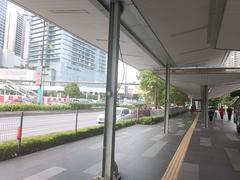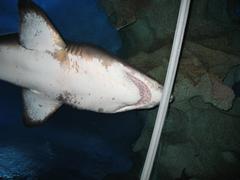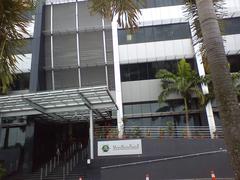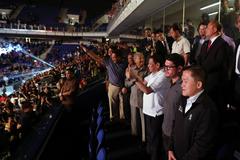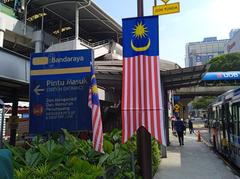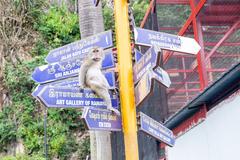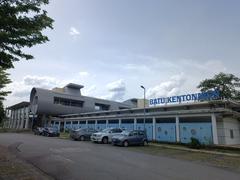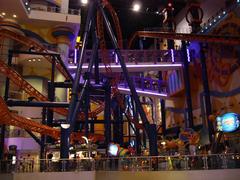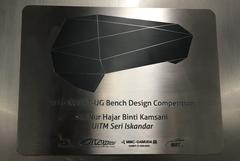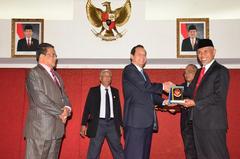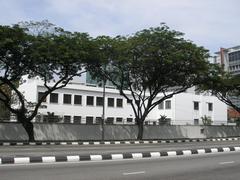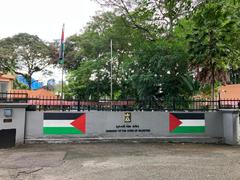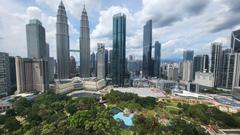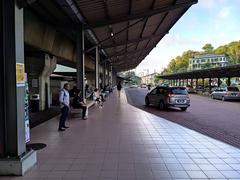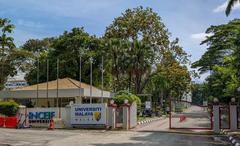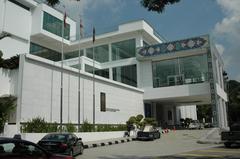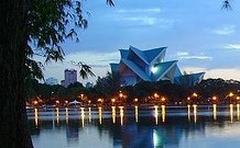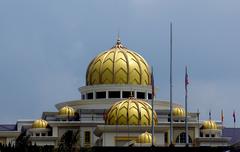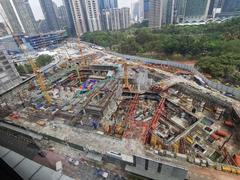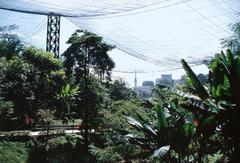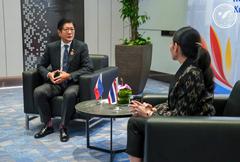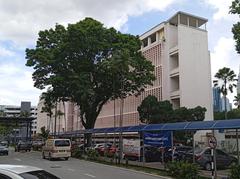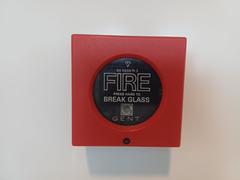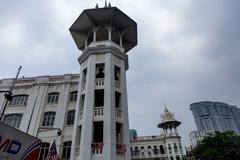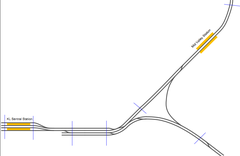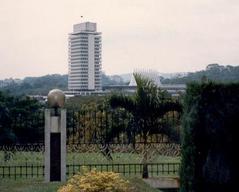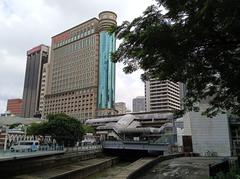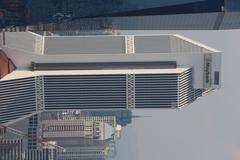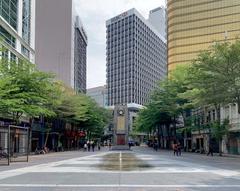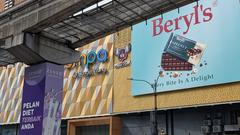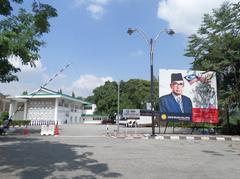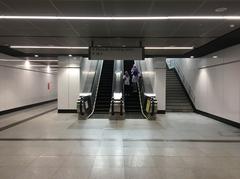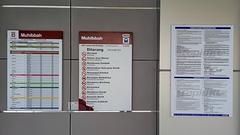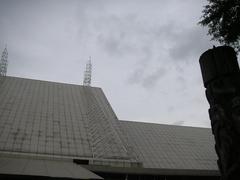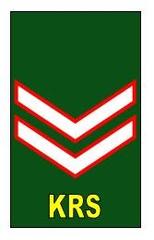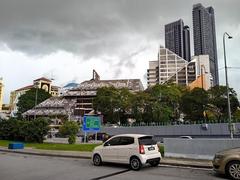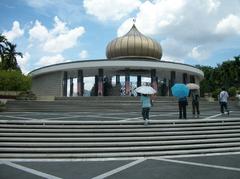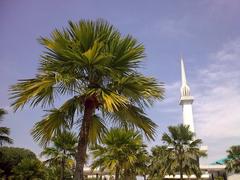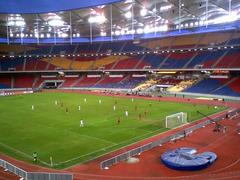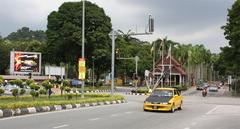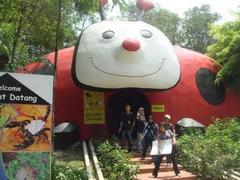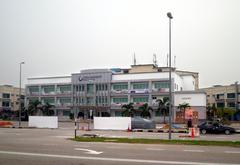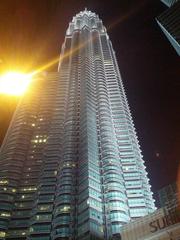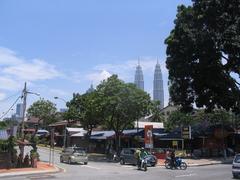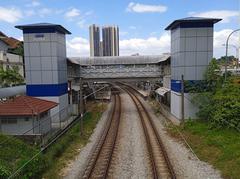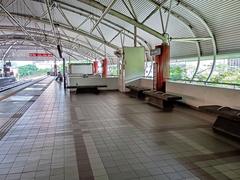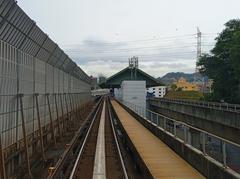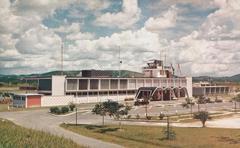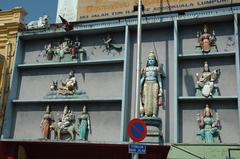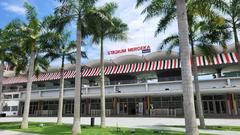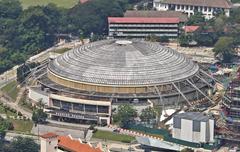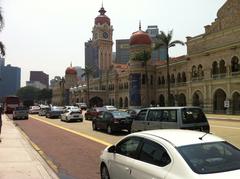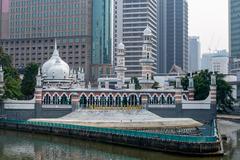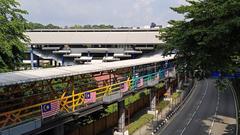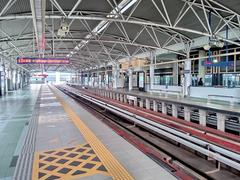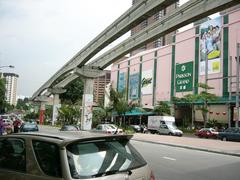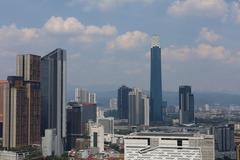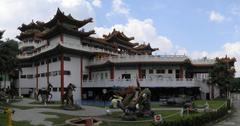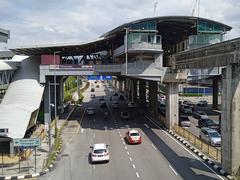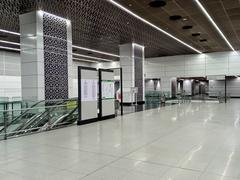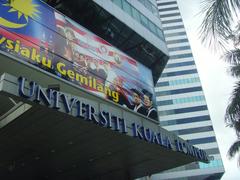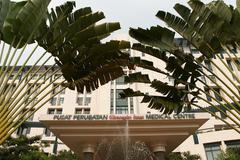Lee Rubber Building Kuala Lumpur: Visiting Hours, Tickets, and Historical Sites Guide
Date: 04/07/2025
Introduction: The Iconic Lee Rubber Building
The Lee Rubber Building, a celebrated Art Deco landmark, stands at the heart of Kuala Lumpur’s Chinatown, embodying the city’s journey from colonial trading hub to multicultural metropolis. Constructed in 1930 as the headquarters of the Lee Rubber Group, it was once the tallest building in Kuala Lumpur, symbolizing the city’s rapid modernization and economic ambition. Designed by Arthur Oakley Coltman of Booty Edwards & Partners, the building’s distinctive geometric façade, 45-degree angled corner, and minimalist ornamentation reflect classic Art Deco ideals (Corporate Office; Wikipedia).
Now revitalized as Else Kuala Lumpur—a boutique hotel—this heritage building has been sensitively restored, blending preserved architectural elements with contemporary Malaysian craftsmanship. The adaptive reuse project not only conserves its historical exterior but also introduces artisanal details and curated local artworks, offering visitors a unique immersion into Malaysia’s cultural tapestry (Design & Architecture; The Star).
With its prominent location at the junction of Jalan Tun H S Lee and Jalan Hang Lekir, the Lee Rubber Building serves as a gateway to Chinatown’s vibrant markets, temples, and historic streets—making it a must-visit for history enthusiasts, architecture lovers, and travelers keen to explore Kuala Lumpur’s living heritage (The Edge Malaysia; EdgeProp).
Historical Background and Architectural Evolution
Origins and Early Years
Commissioned by the influential Lee Rubber Group, the building was completed in 1930 and quickly became a city icon as Kuala Lumpur’s tallest structure at the time. Its Art Deco style is pronounced in the streamlined façade, geometric motifs, and the dramatic 45-degree angled corner. The original structure had four stories, with a fifth added in the 1950s to accommodate business growth (Corporate Office).
Key Architectural Features
- Art Deco Façade: Clean lines, minimal ornamentation, and a distinctive corner set at an angle.
- Five-Foot Way: A covered pedestrian walkway supported by robust pillars, typical of Malaysian urban architecture.
- Original Signage: The pediment above the entrance still displays the building’s name in both English and Chinese, a nod to its multicultural roots (Wikipedia).
- Heritage Protection: As a Category 2 heritage property, its external appearance must be preserved, even during redevelopment (EdgeProp).
Historical Roles
The building’s significance extends beyond architecture:
- Headquarters of Lee Rubber Group: Reflecting the economic power of Malaya’s rubber industry.
- Japanese Occupation: Used as the Japanese army headquarters during World War II (The Edge Malaysia).
- Post-war Era: Housed commercial offices and the popular Popular Bookstore, anchoring the community’s social and commercial life.
Conservation and Adaptive Reuse
Protected by Malaysia’s National Heritage Act, the Lee Rubber Building underwent a careful restoration and transformation into Else Kuala Lumpur hotel. The adaptive reuse was led by Studio Bikin, with interventions that preserved the historic façade while introducing interior atriums for natural light and ventilation. Vertical extensions were set back to maintain the original street view, and local artisans contributed materials and artwork that reflect Malaysian cultural diversity (Design & Architecture).
Visiting the Lee Rubber Building: Essential Information
Visiting Hours
- Hotel Guests: 24/7 access.
- Public Areas (Dining, Lobby): Raw Kitchen Hall and Yellow Fin Horse bar are open daily from 7:00 AM to 11:00 PM.
- Exterior Viewing: The building’s façade and surrounding Chinatown streets can be visited at any time during daylight hours.
- Heritage Tours: Occasional guided tours and cultural events are available; check with hotel staff or the official website.
Tickets and Entry
- No ticket is required to view the exterior or public spaces.
- Access to accommodation and wellness facilities is reserved for hotel guests.
- Dining and bar areas are open to non-residents; reservations are advised during peak hours.
Accessibility
- Wheelchair Access: The hotel and common areas are wheelchair accessible with ramps and lifts.
- Transport: Easily reached via Pasar Seni LRT and MRT stations, and accessible by taxi or ride-hailing apps.
- Parking: Limited nearby; public transport is recommended for convenience.
Highlights of the Else Kuala Lumpur Experience
Accommodation and Amenities
- Rooms & Suites: 49 rooms and suites, blending original fenestrations with modern comfort (categories include Mantra Queen, Urban Tatami, Sanctuary Room, and Else Suite) (SLH).
- Facilities: Saltwater infinity pool, fitness center, library, co-working spaces, float tanks, and event spaces.
- Dining: Raw Kitchen Hall for international and local cuisine; Yellow Fin Horse bar for cocktails and light fare.
- Design: Interiors feature custom bricks, handwoven headboards by Sarawakian artisans, antique timber columns, and curated Malaysian art (Design & Architecture).
Guest Experience
- Check-in/Check-out: Standard check-in from 3:00 PM, check-out by 12:00 PM.
- Rates: Vary by room and season; advance booking recommended.
- Wellness: Float tanks and tranquil pool for relaxation.
- Events: Cultural exhibitions and heritage tours on select dates.
Exploring the Neighborhood: Nearby Attractions
- Sri Mahamariamman Temple: Kuala Lumpur’s oldest Hindu temple, renowned for its ornate gopuram.
- Central Market: Cultural and craft hub with local food and souvenirs.
- Petaling Street Market: Bustling pedestrian market known for street food and shopping.
- Sin Sze Si Ya & Guan Di Temples: Historic Chinese temples reflecting the area’s multicultural heritage.
All sites are within walking distance, making the Lee Rubber Building an ideal starting point for exploring Chinatown.
Visitor Tips
- Photography: The building’s façade is best photographed in the early morning or late afternoon.
- Getting Around: Use public transport to avoid parking challenges.
- Dining: Experience local flavors at hotel venues or nearby street food stalls.
- Book Early: Reserve rooms and restaurant tables in advance, especially during festivals and holidays.
- Heritage Tours: Inquire with hotel staff for upcoming tours or events.
Frequently Asked Questions (FAQs)
Q: What are the Lee Rubber Building’s visiting hours?
A: The exterior is accessible at any time; hotel and dining venues typically open from 7:00 AM to 11:00 PM. Hotel guests have 24/7 access.
Q: Is there an entrance fee?
A: No fee to view the exterior or public areas; hotel amenities require reservation.
Q: Are guided tours available?
A: Occasional heritage and architecture tours are offered; check with the hotel for schedules.
Q: Is the building accessible for those with disabilities?
A: Yes, with ramps and elevators available in the hotel.
Q: How do I get there?
A: Via Pasar Seni LRT/MRT stations or by taxi/ride-hailing; limited parking nearby.
The Lee Rubber Building’s Role in Urban Heritage
This landmark not only preserves Art Deco architecture but also serves as a model of adaptive reuse—demonstrating how historical sites can be revitalized for modern lifestyles while retaining their cultural significance. Its transformation has catalyzed economic activity and contributed to the broader renewal of Kuala Lumpur’s Chinatown, supporting both legacy businesses and new creative ventures (Archify; The Edge Malaysia).
As part of a network of heritage sites, the Lee Rubber Building stands out for its enduring presence, blending history, design, and community life in one of the city’s most dynamic districts.
Sources and Further Information
- Corporate Office
- Wikipedia
- Archify
- Design & Architecture
- The Edge Malaysia
- EdgeProp
- The Star
- SLH
- Les Boutique Hotels
Plan Your Visit
Explore the Lee Rubber Building and immerse yourself in a living piece of Kuala Lumpur’s history. Download the Audiala app for curated heritage guides and up-to-date event information, and follow us on social media for exclusive travel tips.
For more on related destinations, read:
Alt text: Lee Rubber Building façade showcasing Art Deco architecture at sunset in Kuala Lumpur.
Alt text: Map highlighting the Lee Rubber Building location near Petaling Street in Kuala Lumpur.

